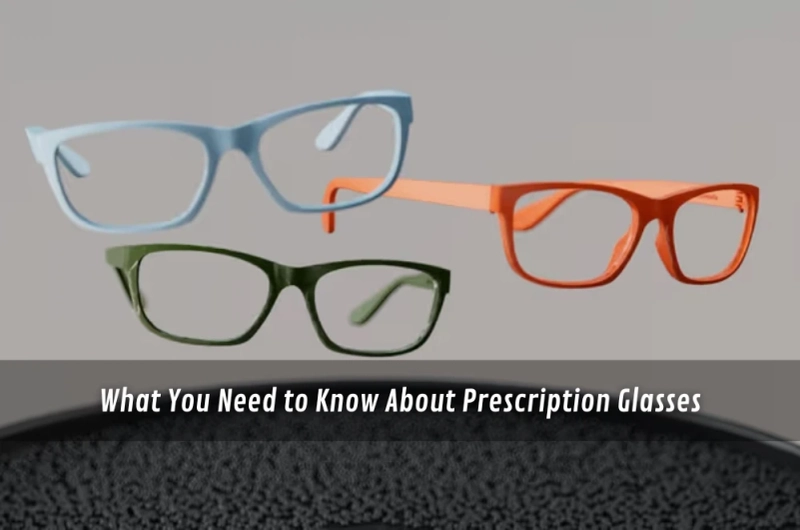Not all glasses feel the same. Some slide down your nose, others pinch behind the ears, and a few manage to sit so comfortably you forget they’re even there. Over the years, I’ve tried different pairs—at work, on the footy sidelines, and while knocking around the shed—and I’ve learnt that context matters. A pair built for long screen sessions isn’t always the best for dusty, hands-on jobs. That’s where prescription safety glasses make sense, offering clear vision with enough toughness to handle knocks without fuss. It’s not about labels or fashion; it’s about choosing frames and lenses that fit the way you actually live. This piece steps through the essentials—fit, durability, and everyday care—so you can make decisions that keep your eyes comfortable and protected, whatever your day throws at you.
What actually makes glasses comfortable
Everything rests on fit and optical alignment. You feel it in small ways—less squinting at traffic lights, fewer nose-pad dents, and no late-day temple ache. Frames, hinges, and lens placement all play a part.
- Frame shape and bridge: A bridge that matches your nose spreads weight so pads don’t leave tracks. Wider faces usually need longer temple arms; narrow faces benefit from a gentle wrap.
- Hinges: Spring hinges forgive rough handling and keep things aligned. Rigid hinges look tidy but can splay over time if you’re hard on your gear.
- Lens centration: If the optical centres sit off your pupillary distance, you’ll chase focus. That strain often shows up as headaches after screens or night driving.
- Surface treatment: Hydrophobic and oleophobic layers do more than bead water—cleaning gets faster, which quietly protects clarity day after day.
A quick week-in-the-life: I rotated two pairs—one with spring hinges and matte temples, one glossy with stiff arms. Same prescription. The matte pair stayed put when I lugged a pot plant up the stairs; the glossy pair slid every time I looked down to unlock the door. Comfort isn’t soft and fuzzy; it’s mechanical.
Eye health basics you can trust
Clear sight is only part of the story—your eyes need long-term care too. Dryness, glare, and fatigue creep up slowly, especially if you’re outdoors a lot or spending hours on screens. Simple habits make a difference: taking short breaks, wearing UV-blocking lenses outside, and getting regular check-ups. For straightforward guidance that isn’t weighed down by jargon, I’ve found eye care advice from trusted health sources helpful—it covers prevention, when to see a professional, and the everyday steps that actually keep eyes comfortable.
- Book eye checks regularly so changes in vision don’t slip past.
- Build in short breaks from close-up work; even 20 seconds helps reset focus.
- Make UV protection a non-negotiable part of outdoor gear.
- Keep lenses clean with microfibre and solution to preserve coatings.
Make lenses last: simple habits that pay off
Even the best lenses lose their edge if they’re mistreated. Small habits—wiping with the right cloth, rinsing dust before cleaning, storing glasses in a hard case—keep vision sharp for longer. Over time, I’ve noticed that scratches and smudges aren’t always about clumsiness; they’re usually from shortcuts, like using a shirt hem or tossing glasses onto a bench.
- Rinse grit off before wiping to avoid grinding scratches.
- Stick to microfibre cloths; they’re made for coatings.
- Keep a rigid case handy—pockets and bags aren’t kind to lenses.
- A weekly wash with mild soap keeps frames clear of sweat and oils.
When I wanted to understand how coatings really behave under daily use, I turned to a detailed lens protection guide that explained the differences between hydrophobic, scratch-resistant, and UV layers in plain terms. It gave me the context to match my habits to the coatings, instead of just trusting the labels.
Keeping your glasses in good nick
Great lenses still struggle if you treat them roughly. A tiny routine pays off with fewer micro-scratches and clearer night vision.
- Rinse first: Dust is sandpaper. A quick splash before wiping protects coatings.
- Use microfibre: Shirts feel soft but carry grit. A clean cloth saves clarity.
- Case every time: A rigid case beats a loose pocket. On the job, add a strap.
- Clean smart: A small pump bottle of lens cleaner earns its spot in the car or desk.
I once tracked mystery streaks back to sunscreen on the temple tips. A weekly wash with mild soap (frames only) stopped the smears. Another sneaky culprit: hairspray. Put glasses on after it dries, not before, and your anti-reflective layer will thank you.
Night driving, screens and shifting light
Low-light exposes weaknesses—halos around lamps, reflections off the dash, and fatigued eyes by the time you reach the driveway. The fixes are simple and specific.
- For night driving: Prioritise anti-reflective and keep lenses spotless; even a thin film adds glare.
- For water and roads: Polarised sunnies slice mirror-like glare from wet surfaces and chrome.
- For screens, Correct centration and working distance matter more than the latest filter buzzword.
- For unpredictable days: Photochromic lenses smooth the transitions when you’re in and out all day.
I trialled a dusk commute with two setups: one pair with fresh anti-reflective, one older pair with worn coating. Same route, same weather, completely different comfort. The fresh pair turned headlight starbursts into clean pinpoints; the older pair had me squinting at every second intersection. Sometimes “new” isn’t about fashion—it’s about a coating doing its job.

Final thoughts
The right pair of glasses shouldn’t demand your attention—they should support your day, whether that’s staring at spreadsheets, cycling home at dusk, or sanding timber in the shed. Getting the basics right—fit, lens materials, and a few care routines—pays off with comfort that lasts beyond the first week of wear.
What sticks with me is how often vision connects to broader wellbeing. Regular check-ups and small protective habits matter as much as the frames themselves. In conversations about community health, I’ve noticed that eye health awareness often comes up as part of a bigger picture—reminding us that sight isn’t just personal, it’s something worth protecting across all stages of life. That perspective grounds the choices we make today and helps ensure a clear, comfortable vision for the years ahead.


